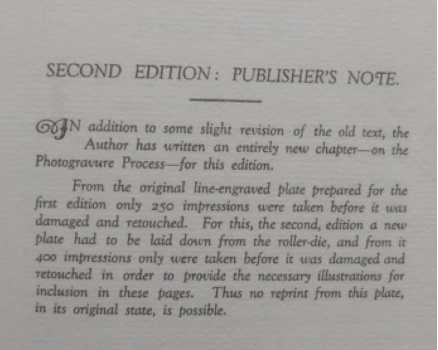An Introduction to Advanced Philately
Alexander Joseph Sefi's masterpiece
This article was first published as “Reviewing a Classic: An Introduction to Advanced Philately, by Alexander Joseph Sefi” Philatelic Literature Review 66 no. 3 (Third Quarter 2017).
As 2022 draws to a close, I think about the past. It was some five years ago that my first small article debuted in the pages of the Philatelic Literature Review. Most writers cringe when they see their earlier works and so do I. Nevertheless, I have fond memories of writing this one; and then emailing it to Tara Murray, the then librarian of the American Philatelic Research Library, with the line, “I am not sure if the subject was ever covered in the journal after Hagan's original 1981 article and hence I decided to tackle it.”
While going through Vol. 30 No. 3 (3rd Quarter 1981) of Philatelic Literature Review I came across the noted bibliophile William Hagan’s regular column Philatelic Literature Price Trends; this particular issue’s column deals with, amongst other things, A.J. Sefi’s masterpiece An Introduction to Advanced Philately.1 Hagan describes the first edition as well as the “Ordinary” second edition; but since he did not have access to the ‘De Luxe’ version of the second edition he does not cover it. He ends his piece saying, “If someone will lend or sell me this edition I’ll describe it.”
Being fortunate in possessing a copy of the ‘De Luxe’ edition (Figure 1), I will, in this article, describe it. However before doing so, I would like to give a brief background of this book especially to readers who do not have access to Sefi’s book.
The title of the book can be a bit misleading especially if one expects the book to erudite on stamp collecting and its processes, famous stamps etc. Rather the author adopts the method of “…explaining and illustrating the characteristics of stamps produced by different processes”. He takes one single design and shows how it is reproduced by different processes - line engraving, lithography, and surface printing in the first edition and additionally photogravure in the second (Figure 2) - and how these processes affects its appearance and what abnormalities could occur during the manufacture of the printing surface, or during the actual printing of the stamp.
The first edition of Sefi’s book was published in 1926; it was printed on handmade paper and was a limited edition of two hundred and fifty copies.2 Hagan mentions that he has not seen the dust jacket for this edition and nor have I; it is possible that it was not issued with one. The second edition, published 1932, was printed in both an ordinary edition of three hundred and fifty copies as well as a deluxe edition of fifty copies, the former printed on machine and the latter on handmade paper (Figure 3). Both editions are accompanied by a dust jacket.
Description of the Deluxe Edition
If I have to stick to Hagan’s original style, I would describe the deluxe edition as follows:
SEFI (A.J.). An Introduction to Advanced Philately. Rowley & Rowley Limited. MCMXXXII. London. Quarto, 10¼ in.,3 XX + 130 pp. Twenty-one plates covered with bound-in rice paper, six paper samples. Gilt top and deckle fore-edge and bottom. Half leather brown cover with brown cloth.4 Spine has title, author, and “Second Edition” gold stamped. Brown dust jacket printed in black and red with the title itself, the city, and publication date in red; the subtitle, the author and his credential,5 “Second Edition”, the publisher’s ornament, and the publisher printed in black. Spine of the dust jacket has the title, author and his credential, “Price 50/- Nett (De Luxe Edition)”, and publisher printed in black.6 Title page is similar to the front of the dust jacket. Each chapter has the first letter printed in red as well. A limited edition of four hundred copies so stated and then hand numbered below.7 Autographed by the author signing as “A.J. Sefi” below the numbering.
A more modern bibliography (using the Chicago Manual of Style 16th edition, annotated bibliography) would be as follows:
Sefi, Alexander J. An Introduction to Advanced Philately: With Special Reference to Typical Methods of Stamp Production. 2nd ed. London: Rowley & Rowley Limited, 1932
(2) + xvi + (4) + 130 + (1) pp + (3) p, (21) plates and (6) paper samples bound in. Erratum slip bound in after page 4. 266 x 200 mm. Hard Bound in Half Brown Leather and Brown Cloth with gilt lettering on spine. Gilt top edge and deckle fore-edge and bottom. DJ. De luxe edition of 50 copies numbered 351 to 400 this being 364/400. Printed on ‘Millbourn’ Hand-Made paper. Signed by author on the page facing the title page. Price 50/- (shillings) on DJ spine.
The full title of the book is An Introduction to Advanced Philately: With Special Reference to Typical Methods of Stamp Production.
Brian J. Birch mentions in his Bibliography of General Literature in the Philatelic Library of Brian J. Birch that of the 250 copies, 240 were numbered.
Hagan measures the ordinary edition at 9¾ in.
The cloth is in a slightly lighter shade of brown than the leather. The covers are plain.
“Editor of the Philatelic Journal of Great Britain”
The dust jackets of the two editions are quite similar to each other excepting that the spine of the dust jacket of the ordinary edition has “18/-” (shillings) printed.
The exact wording is “This is the Second Edition, limited to four hundred copies, of which three hundred and fifty (numbered 1 to 350) constitute the ordinary edition and fifty (printed on “Millbourn” Hand-Made paper and numbered 351 to 400) the “de luxe” edition”. My copy is numbered 364.





